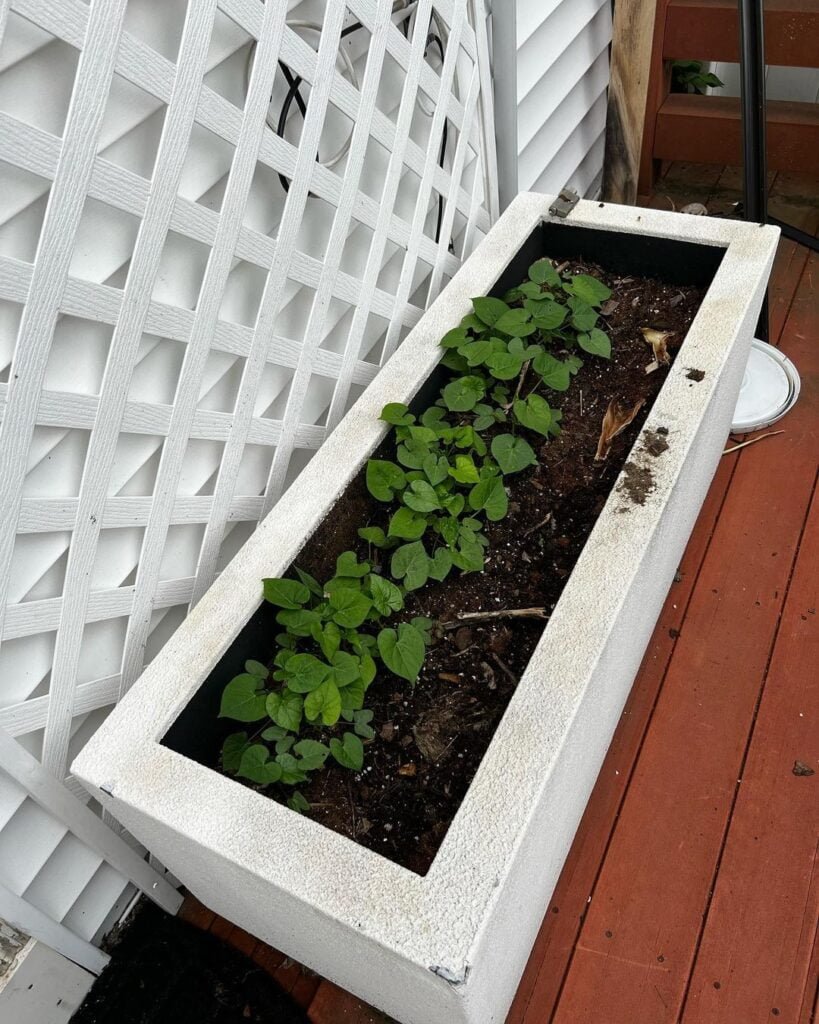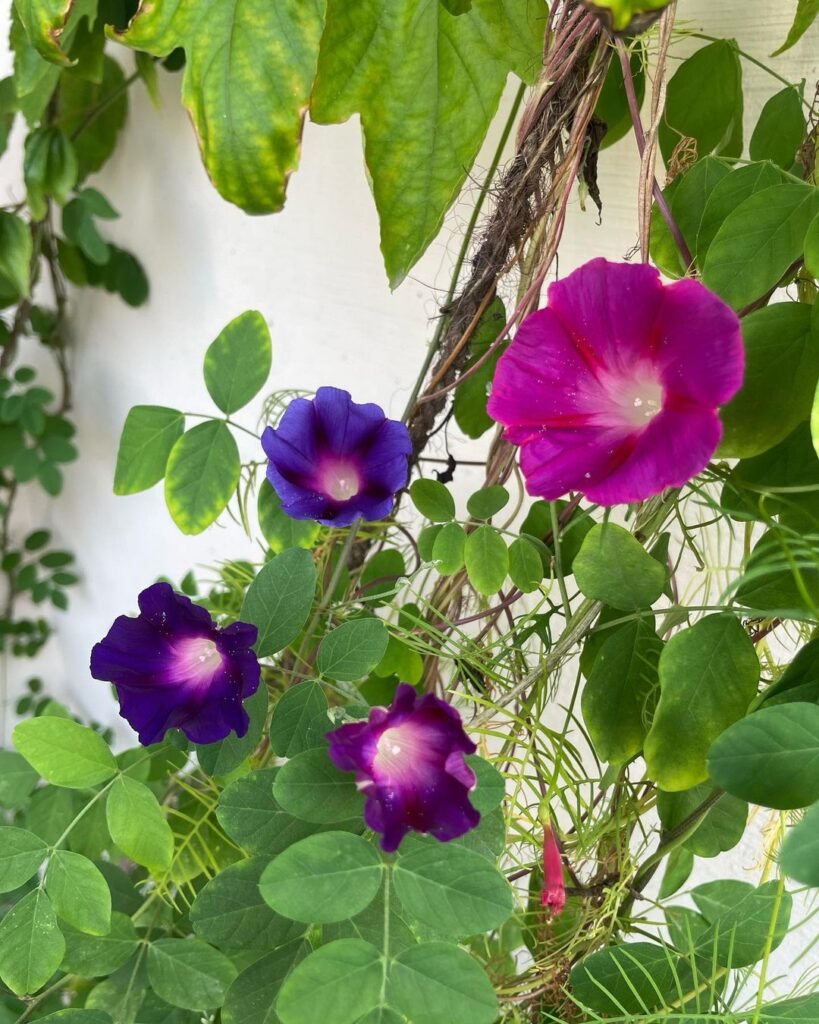Morning Glory Vines are fast-growing annual flowers perfect for adding vibrant color to trellises, fences, and more. This guide provides informative details on planting, training, and maintaining these low-maintenance beauties.
Morning Glory Vines: Splashes of Color

Morning glory vines are excellent annual vines for introducing splashes of color and covering bare fences, trellises, or arbors quickly. These fast-growing, easy-care bloomers rapidly develop lush foliage adorned with trumpet-shaped flowers from summer until the first fall frosts.
Available in a rainbow of shades, including blue, purple, pink, white, red, and bi-colors, morning glory blossoms open each morning to greet the day. Their elegant, twining vines can swiftly reach up to 10-15 feet long within a matter of months.
Why Grow Morning Glories?

If the objective is to conceal an unsightly chain link fence, allow morning glories to spill over a garden arbor or obelisk, or fill a trellis with color, they are an excellent choice. Notably, morning glories require minimal maintenance beyond basic care for maximum flowering throughout the season.
Planting Morning Glories
Direct Sowing vs. Indoor Starts

Morning glories grow from seeds directly sown outdoors after the last spring frost date. They will rapidly sprout and begin climbing as the weather warms.
For an earlier start, it is possible to pre-sprout the seeds indoors 2-3 weeks before transplanting. Once sprouted, carefully plant the delicate seedlings outside, keeping the roots intact.
Site Selection and Sowing Seeds

Select a sunny, well-drained location for planting. Morning glories benefit from soil amended with compost or manure mixed in before sowing. A support structure, such as a trellis, arbor, or fence, is necessary for the vines.
For an easy, continuous display, plant morning glory seeds every few weeks until early summer. This ensures new vines replace earlier plantings as they fade in fall.
Sow the large seeds 1⁄2 to 1 inch deep, spacing them 6-12 inches apart from each other and any structure they will climb. Water well after planting. Seedlings typically emerge in 7-10 days with warmth.
Care and Training
Supporting Vines

Once sprouted, attach the vines’ tendrils to their support structure. Guide them in the desired direction by gently wrapping the tendrils around the trellis, fence, or arbor for them to grip.
Light, Water, and Fertilizing

Morning glories require at least six hours of direct sunlight per day. Once established, they tolerate drought reasonably well. Water when the soil starts to dry out to keep growth on track.
Apply a layer of mulch to retain soil moisture and discourage weeds, which can quickly overtake these plants. An annual application of fertilizer helps spur vigorous new growth.
Self-Sowing and Seed Saving
As fall arrives, allow the dying vines to remain on their structures to self-sow new seedlings for the next year. Alternatively, collect mature seeds for indoor starting.
Morning Glory Varieties to Try
With numerous colors and patterns available, it is easy to find morning glory vines perfectly suited to individual preferences. Here are some top cultivars:
Classic and Favorite Varieties

- ‘Heavenly Blue’ – The classic brilliant blue morning glory with white throats. Reliable heavy bloomer.
- ‘Cherry’ – Striking deep crimson-red blooms with white highlights. Vigorous climber.
- ‘Milky Way’ – Pastel blooms swirled with blues, pinks, and white on the same plant.
- ‘Grandpa Ott’ – Antique German heirloom with deep purple, starry flowers.
- ‘Flying Saucers’ – Huge 4-5 inch violet flowers! Thrives in summer heat.
Morning Glory Plant Attributes

Please refer to the attached Excel file for a table detailing morning glory plant attributes.
With their rapid growth and easy care requirements, morning glories are an ideal choice for quickly transforming bare spaces into colorful, blooming retreats. Plant some seeds this spring for a stunning display all season long.
Pingback: Hollyhocks: How to Grow and Care for These Classic Cottage Flowers -
Pingback: A Guide to Growing & Caring for Verbena: Endless Color from Spring to Fall -
Pingback: “Vibrant Viburnum Shrubs: A Beginner’s Guide to Growing Successfully”
Pingback: 10 Texas Caterpillars: A Visual Identification Guide -
Pingback: Black and Yellow Caterpillars (With Pictures) – Identification Guide
Pingback: Spirea Shrubs : Flowering Stars for Year-Round Interest - Gardener's School
Pingback: The Best Types of Tomatoes to Grow in the South - Gardener's School